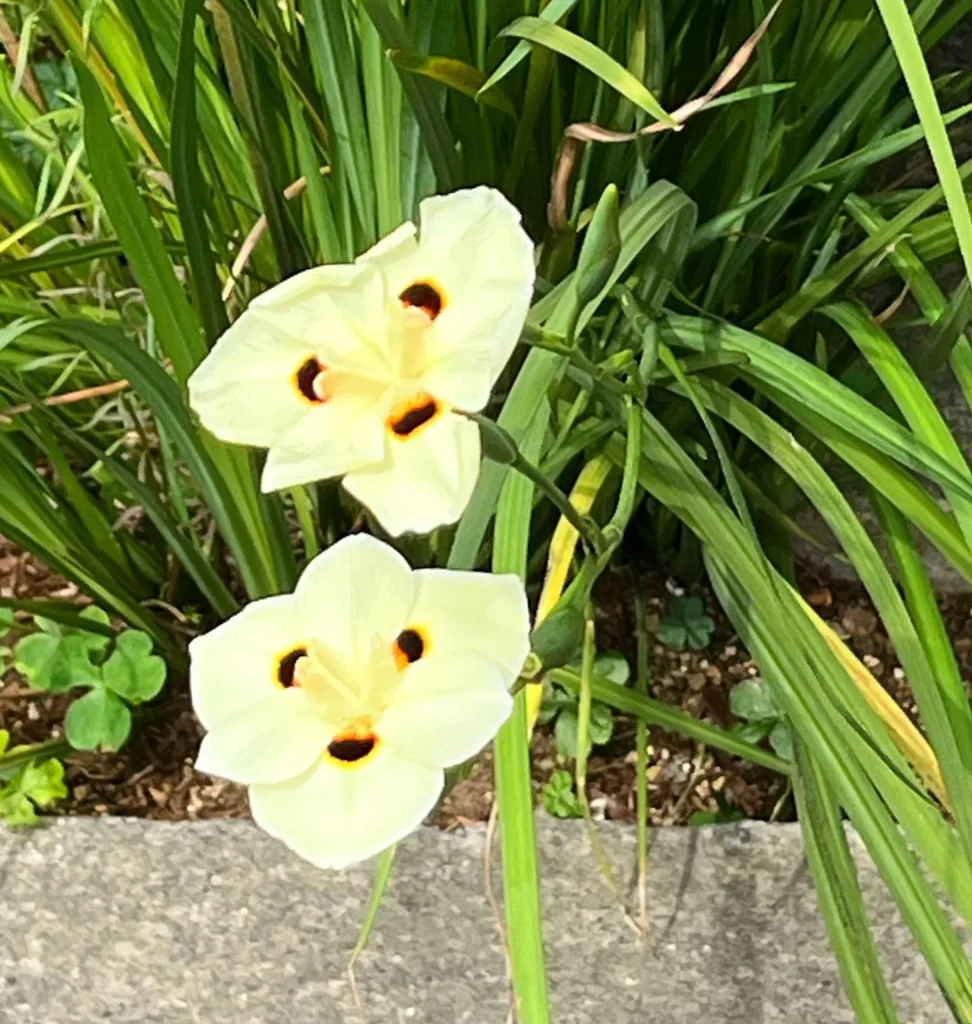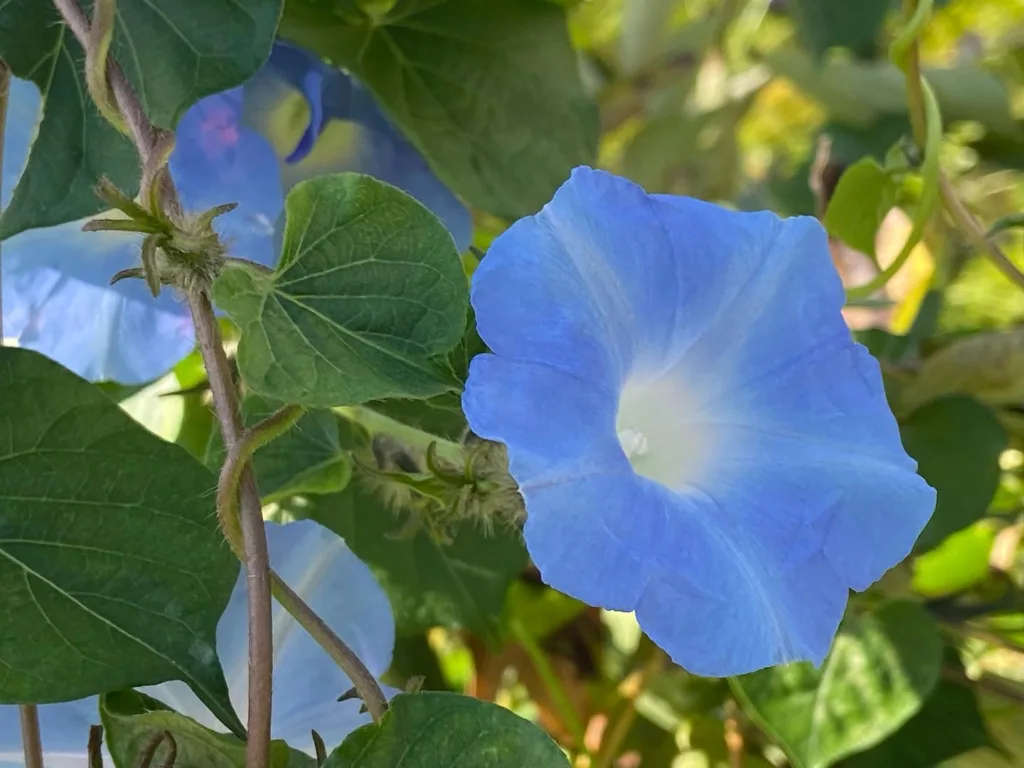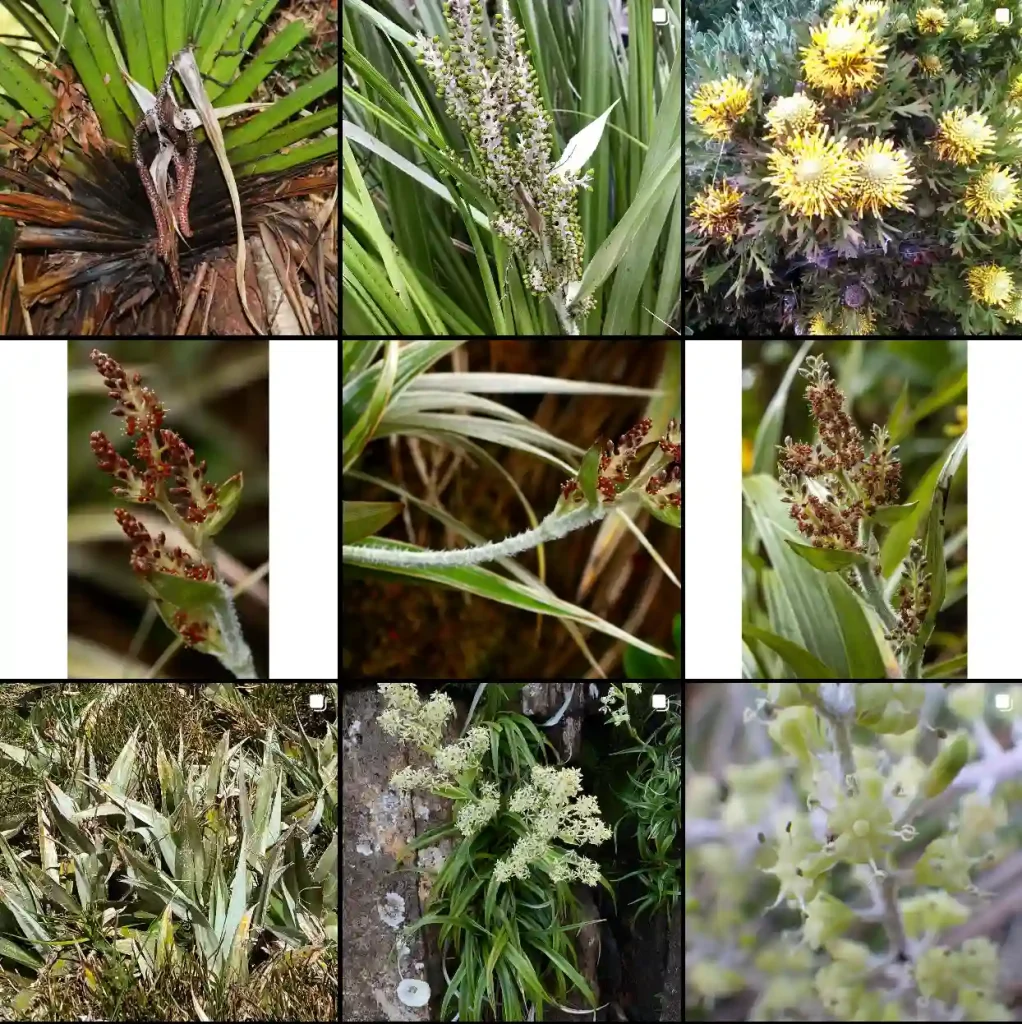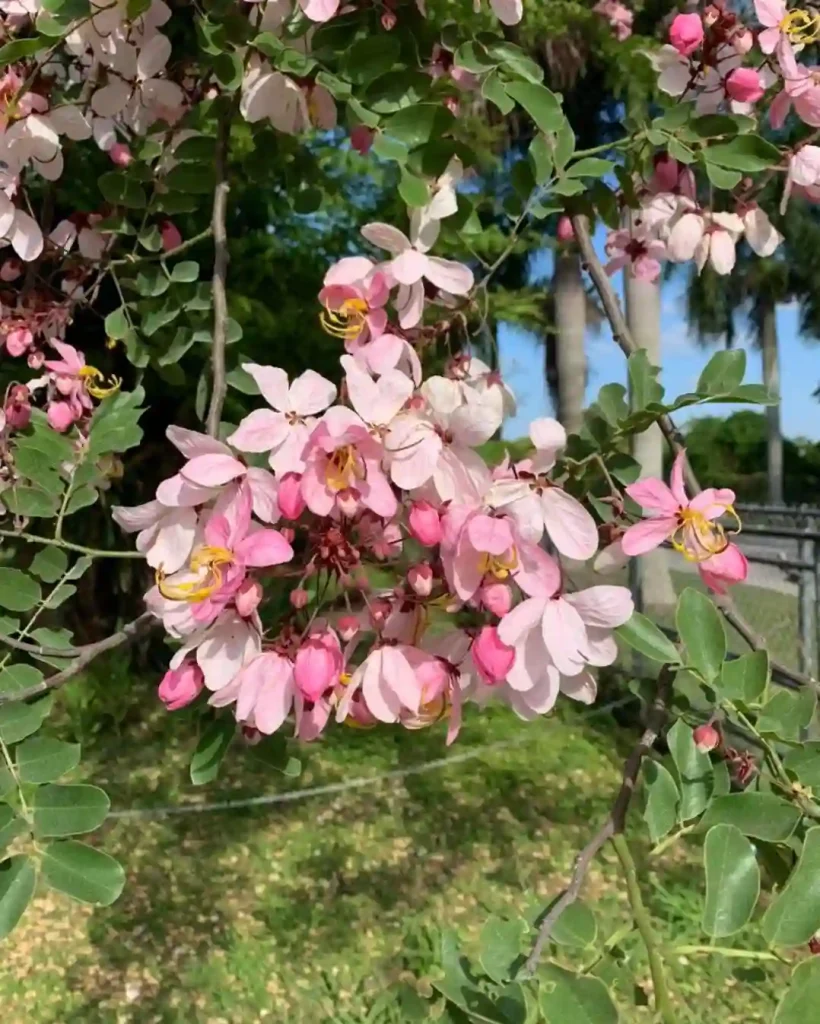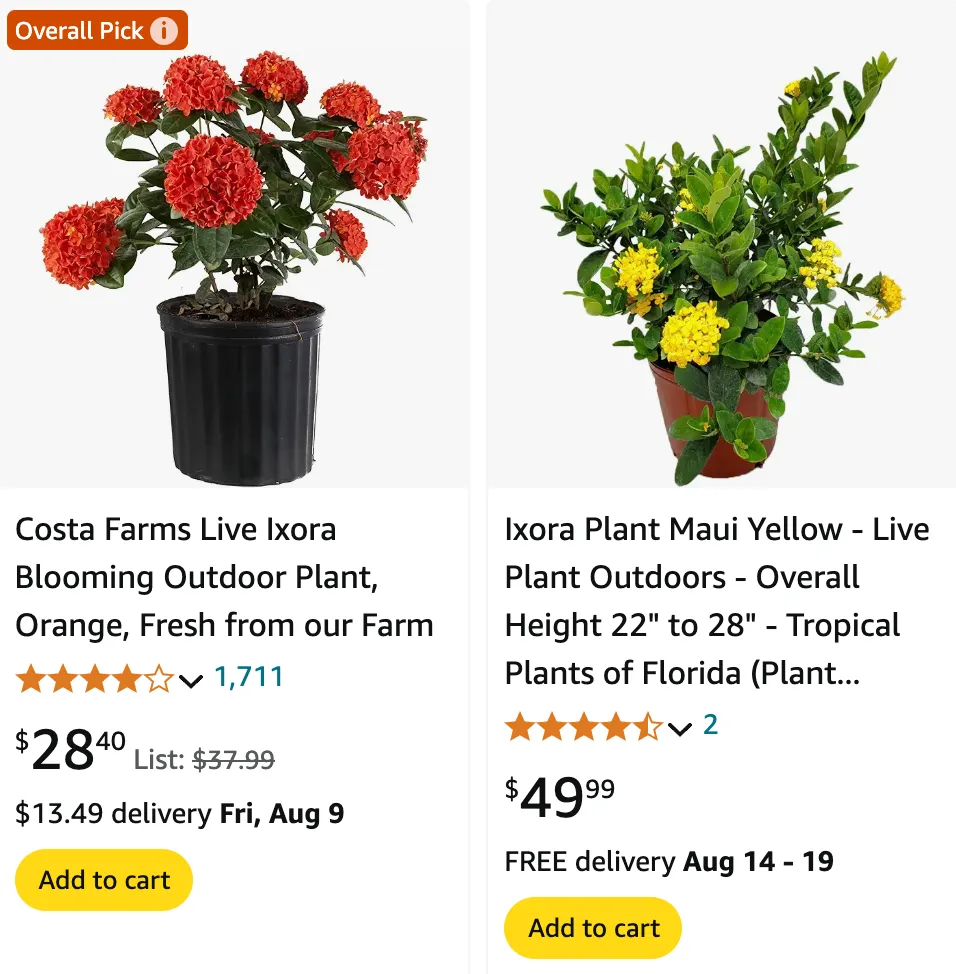
Ixora: A Floral Fascination
My name is Ferb Vu, and I’ve always been drawn to the vibrant hues and delicate beauty of flowering plants. Among my favorites is the Ixora, a genus belong to the Rubiaceae family, boasting a diverse array of species, each with its own unique charm. These evergreen shrubs, native to the tropical and subtropical regions of the world, are renowned for their clusters of star-shaped flowers that bloom in a spectrum of colors, from fiery reds and oranges to soft pinks and yellows.
A World of Ixora
The Ixora genus is a vast one, encompassing an estimated 556 species. Here are:
- Ixora accedens Valeton
- Ixora aciculiflora Bremek.
- Ixora acuminata Roxb.
- Ixora acuminatissima Müll.Arg.
- Ixora acuticauda Bremek.
- Ixora aegialodes Bremek.
- Ixora agasthyamalayana Sivad. & N.Mohanan
- Ixora aggregata Hutch.
- Ixora agostiniana Steyerm.
- Ixora akkeringae (Teijsm. & Binn.) Valeton ex Bremek.
- Ixora alba L.
- Ixora albersii K.Schum.
- Ixora alejandroi Banag & Tandang
- Ixora aluminicola Steyerm.
- Ixora amapaensis Steyerm.
- Ixora amherstiensis Bremek.
- Ixora amplexicaulis Gillespie
- Ixora amplexifolia K.Schum. & Lauterb.
- Ixora amplifolia A.Gray
- Ixora andina C.M.Taylor
- Ixora aneimenodesma K.Schum.
- Ixora aneityensis Guillaumin
- Ixora angustilimba Merr.
- Ixora aoupinieensis Hoang & Mouly
- Ixora araguaiensis Delprete
- Ixora archboldii Bremek.
- Ixora arestantha A.C.Sm.
- Ixora asme Guillaumin
- Ixora athroantha Bremek.
- Ixora auricularis Chun & How ex W.Ko
- Ixora auriculata Elmer
- Ixora aurorea Ridl.
- Ixora backeri Bremek.
- Ixora bahiensis Benth.
- Ixora baileyana Bridson & L.G.Adams
- Ixora balansae Pit.
- Ixora baldwinii Keay
- Ixora balinensis Bremek.
- Ixora bancana Bremek.
- Ixora banjoana K.Krause
- Ixora barbata Roxb. ex Sm.
- Ixora barberae Bremek.
- Ixora bartlingii Elmer
- Ixora batesii Wernham
- Ixora batuensis Bremek.
- Ixora bauchiensis Hutch. & Dalziel
- Ixora beckleri Benth.
- Ixora bemangidiensis Guédès
- Ixora betongensis Craib
- Ixora bibracteata Elmer
- Ixora biflora Fosberg
- Ixora birmahica Bremek.
- Ixora blumei Zoll. & Moritzi
- Ixora borboniae Mouly & B.Bremer
- Ixora borneensis (Miq.) Boerl.
- Ixora bougainvilliae Bremek.
- Ixora brachiata Roxb.
- Ixora brachyanthera Bremek.
- Ixora brachycotyla Bremek.
- Ixora brachypoda DC.
- Ixora brachypogon Bremek.
- Ixora brachyura Bremek.
- Ixora bracteolaris Müll.Arg.
- Ixora bracteolata Craib
- Ixora brandisiana Kurz
- Ixora brassii S.Moore
- Ixora brevicaudata Bremek.
- Ixora brevifolia Benth.
- Ixora breviloba Bremek.
- Ixora brevipedunculata Fosberg
- Ixora brunnescens Kurz
- Ixora brunonis Wall. ex G.Don
- Ixora bullata Turrill
- Ixora burundiensis Bridson
- Ixora butterwickii Hole
- Ixora buxina Baill.
- Ixora cabraliensis Di Maio & Peixoto
- Ixora calcicola A.C.Sm.
- Ixora calliantha Bremek.
- Ixora callithyrsa Bremek.
- Ixora calycina Thwaites
- Ixora cambodiana Pit.
- Ixora capillaris Bremek.
- Ixora capitulifera Merr.
- Ixora carewii Horne ex Baker
- Ixora casei Hance
- Ixora caudata Bremek.
- Ixora cauliflora Montrouz.
- Ixora celebica Ridl. ex Bremek.
- Ixora cephalophora Merr.
- Ixora ceramensis Bremek.
- Ixora chakrabortyi Murugan & S.Prabhu
- Ixora chartacea Elmer
- Ixora chinensis Lam. Plant FAQs: Ixora Chinensis
- Ixora cibdela Craib
- Ixora cincta Bremek.
- Ixora clandestina De Block
- Ixora clarae Mouly & Pisivin
- Ixora clementium Bremek.
- Ixora clerodendron Ridl.
- Ixora coccinea L. Plant FAQs: Ixora Coccinea – Flame of the Woods – Jungle Flame
- Ixora coffeoides Valeton
- Ixora collina (Montrouz.) Beauvis.
- Ixora comptonii S.Moore
- Ixora concinna R.Br. ex Hook.f.
- Ixora conferta Valeton
- Ixora confertiflora Merr.
- Ixora confertior Bremek.
- Ixora congesta Roxb.
- Ixora congestiflora Delprete
- Ixora coralloraphis Bremek.
- Ixora cordata Merr. & L.M.Perry
- Ixora cordifolia Valeton
- Ixora coriifolia Bremek.
- Ixora coronata A.C.Sm.
- Ixora cowanii Bremek.
- Ixora crassifolia Merr.
- Ixora crassipes Boivin ex De Block
- Ixora cremixora Drake
- Ixora cumingiana S.Vidal
- Ixora cuneata W.Hunter
- Ixora cuneifolia Roxb.
- Ixora curtisii Ridl.
- Ixora cuspidata Ridl.
- Ixora daemonia Bremek.
- Ixora davisii Sandwith
- Ixora decaryi De Block
- Ixora deciduiflora Bremek.
- Ixora decus-silvae Bremek.
- Ixora delicatula Keay
- Ixora deliensis Bremek.
- Ixora delpyana Pierre ex Pit.
- Ixora densiflora Müll.Arg.
- Ixora densithyrsa De Block
- Ixora diversifolia R.Br. ex Kurz
- Ixora djambica Bremek.
- Ixora dolichophylla K.Schum.
- Ixora dolichothyrsa Bremek.
- Ixora dongnaiensis Pierre ex Pit.
- Ixora doreensis (Scheff.) Valeton
- Ixora dorgelonis Bremek.
- Ixora duckei Standl.
- Ixora dzumacensis Guillaumin
- Ixora ebracteolata Merr.
- Ixora effusa Chun & F.C.How
- Ixora elegans Gillespie
- Ixora elisae Mouly & Pisivin
- Ixora elongata B.Heyne ex G.Don
- Ixora eludens Bremek.
- Ixora emirnensis Baker
- Ixora emygdioi Di Maio & Peixoto
- Ixora endertii Bremek.
- Ixora engganensis Bremek.
- Ixora ensifolia Merr. & L.M.Perry
- Ixora eriantha A.Gray
- Ixora erythrocarpa K.Schum. & Lauterb.
- Ixora eugenioides Pierre ex Pit.
- Ixora euosmia K.Schum.
- Ixora fallax Bremek.
- Ixora farinosa Bremek.
- Ixora faroensis Standl.
- Ixora fastigiata (R.D.Good) Bremek.
- Ixora ferrea (Jacq.) Benth.
- Ixora filiflora Bremek.
- Ixora filipendula Bremek.
- Ixora filipes Valeton
- Ixora filmeri Elmer
- Ixora finlaysoniana Wall. ex G.Don
- Ixora flagrans Bremek.
- Ixora flavescens Pierre ex Pit.
- Ixora floribunda (A.Rich.) Griseb.
- Ixora florida S.Moore
- Ixora foetida (L.f.) Fosberg
- Ixora foliicalyx Guédès
- Ixora foliosa Hiern
- Ixora forbesii Bremek.
- Ixora fragrans (Hook. & Arn.) A.Gray
- Ixora francavillana Müll.Arg.
- Ixora francii Schltr. & K.Krause
- Ixora froelichiana C.M.Taylor
- Ixora fucosa Bremek.
- Ixora fugiens Bremek.
- Ixora fulgida Ridl.
- Ixora fulviflora Bremek.
- Ixora funckii Wernham
- Ixora fusca E.T.Geddes
- Ixora fuscescens Valeton ex Merr.
- Ixora fuscovenosa De Block
- Ixora gamblei V.S.Ramach. & V.J.Nair
- Ixora gardneriana Benth.
- Ixora gautieri De Block
- Ixora gibbsiae Bremek.
- Ixora gigantifolia Elmer
- Ixora glaucina (Teijsm. & Binn.) Kurz
- Ixora glomeruliflora Bremek.
- Ixora graciliflora Benth.
- Ixora grandifolia Zoll. & Moritzi
- Ixora granulata Bremek.
- Ixora grazielae Di Maio & Peixoto
- Ixora greenwoodiana A.C.Sm.
- Ixora griffithii Hook.
- Ixora guillenii C.M.Taylor
- Ixora guillotii Hochr.
- Ixora guineensis Benth.
- Ixora guluensis Valeton ex Merr.
- Ixora gyropogon Bremek.
- Ixora hainanensis Merr.
- Ixora hajupensis Valeton
- Ixora hallieri Bremek.
- Ixora hartiana De Block
- Ixora harveyi (A.Gray) A.C.Sm.
- Ixora havilandii Ridl.
- Ixora hekouensis Tao Chen
- Ixora helwigii Bremek.
- Ixora henryi H.Lév.
- Ixora heterodoxa Müll.Arg.
- Ixora hiernii Scott Elliot
- Ixora himantophylla Bremek.
- Ixora hippoperifera Bremek.
- Ixora homolleae Govaerts ex De Block
- Ixora hookeri (Oudem.) Bremek.
- Ixora hymenophylla Bremek.
- Ixora imitans Bremek.
- Ixora inaequifolia C.B.Rob.
- Ixora inexpecta Bremek.
- Ixora insularum Bremek.
- Ixora intensa K.Krause
- Ixora intermedia Elmer
- Ixora intropilosa Steyerm.
- Ixora inundata Hiern
- Ixora irwinii Delprete
- Ixora iteaphylla Bremek.
- Ixora iteoidea Bremek.
- Ixora ixoroides (Guillaumin) Mouly & B.Bremer
- Ixora jacobsonii Bremek.
- Ixora jaherii Bremek.
- Ixora javanica (Blume) DC.
- Ixora johnsonii Hook.f.
- Ixora jourdanii Mouly & J.Florence
- Ixora jucunda Thwaites
- Ixora junghuhnii Bremek.
- Ixora kachinensis Deb & Rout
- Ixora kalehensis De Block
- Ixora kaniensis Valeton
- Ixora karimatica Bremek.
- Ixora kavalliana K.Schum.
- Ixora keenanii Deb & Rout
- Ixora keithii Ridl.
- Ixora kerrii Craib
- Ixora kerstingii K.Schum. & Lauterb.
- Ixora keyensis Warb.
- Ixora killipii Standl.
- Ixora kinabaluensis Stapf
- Ixora kingdon-wardii Bremek.
- Ixora kingstoni Hook.f.
- Ixora kjellbergii Bremek.
- Ixora knappiae C.M.Taylor
- Ixora koordersii (Ridl.) Bremek.
- Ixora korthalsiana Kurz
- Ixora krewanhensis Pierre ex Pit.
- Ixora kuakuensis S.Moore
- Ixora kurziana (Teijsm. & Binn.) Kurz
- Ixora labuanensis Bremek.
- Ixora lacei Bremek.
- Ixora lacuum Bremek.
- Ixora lagenifructa De Block
- Ixora lakshnakarae Craib
- Ixora lancisepala Ridl.
- Ixora laotica Pit.
- Ixora laurentii De Wild.
- Ixora lavanya J.Mathew & P.M.Salim
- Ixora lawsonii Gamble
- Ixora laxiflora Sm.
- Ixora lebangharae Bremek.
- Ixora lecardii Guillaumin
- Ixora ledermannii K.Krause
- Ixora leptopus Valeton
- Ixora letestui Pellegr.
- Ixora leucocarpa Elmer
- Ixora leytensis Elmer
- Ixora liberiensis De Block
- Ixora linggensis Bremek.
- Ixora lobbii J.Veitch & J.Veitch f.
- Ixora loerzingii Bremek.
- Ixora longibracteata Bremek.
- Ixora longifolia Sm.
- Ixora longiloba Guillaumin
- Ixora longipedicellata De Block
- Ixora longipedunculata De Wild.
- Ixora longipes (DC.) Zoll. & Moritzi
- Ixora longistipula Merr.
- Ixora longshanensis Tao Chen
- Ixora lucida R.Br. ex Hook.f.
- Ixora lunutica C.E.C.Fisch.
- Ixora luzoniensis Merr.
- Ixora macgregorii C.B.Rob.
- Ixora macilenta De Block
- Ixora macrantha (Steud.) Bremek.
- Ixora macrocotyla Bremek.
- Ixora macrophylla Bartl. ex DC.
- Ixora macrothyrsa (Teijsm. & Binn.) N.E.Br.
- Ixora magnifica Elmer
- Ixora makassarica Bremek.
- Ixora malabarica (Dennst.) Mabb.
- Ixora malaica W.Hunter
- Ixora malayana Bremek.
- Ixora mandalayensis Bremek.
- Ixora mangabensis Aug.DC.
- Ixora mangoliensis Bremek.
- Ixora margaretae (N.Hallé) Mouly & B.Bremer
- Ixora marquesensis F.Br.
- Ixora marsdenii Ridl.
- Ixora martinsii Standl.
- Ixora masoalensis De Block
- Ixora mattogrossensis (Standl.) C.M.Taylor
- Ixora maxima Seem.
- Ixora maymyensis Bremek.
- Ixora mearnsii Merr.
- Ixora meeboldii Craib
- Ixora megalophylla Chamch.
- Ixora megalothyrsa Bremek.
- Ixora mekongensis Pit.
- Ixora membranifolia Valeton ex Merr.
- Ixora mentangis Bremek.
- Ixora merguensis Hook.f.
- Ixora microphylla Drake
- Ixora mildbraedii K.Krause
- Ixora miliensis Bremek.
- Ixora minahassae Bremek.
- Ixora mindanaensis Merr.
- Ixora minor (Valeton) Mouly & B.Bremer
- Ixora minutiflora Hiern
- Ixora miquelii Bremek.
- Ixora mirabilis Bremek.
- Ixora mjoebergii Merr.
- Ixora mocquerysii Aug.DC.
- Ixora mollirama Bremek.
- Ixora moluccana Bremek.
- Ixora mooreensis (Nadeaud) Fosberg
- Ixora moskovitsiana C.M.Taylor
- Ixora moszkowskii Bremek.
- Ixora motleyi Bremek.
- Ixora mucronata Warb.
- Ixora muelleri Bremek.
- Ixora myitkyinensis Bremek.
- Ixora myrsinoides A.C.Sm.
- Ixora myrtifolia A.C.Sm.
- Ixora namatanaica Bremek.
- Ixora nana Robbr. & Lejoly
- Ixora nandarivatensis Gillespie
- Ixora narcissodora K.Schum.
- Ixora natunensis Bremek.
- Ixora nematopoda K.Schum.
- Ixora neocaledonica Hochr.
- Ixora neriifolia Jack
- Ixora nicaraguensis Wernham
- Ixora nicobarica Bremek.
- Ixora nienkui Merr. & Chun
- Ixora nigerica Keay
- Ixora nigricans R.Br. ex Wight & Arn.
- Ixora nimbana Schnell
- Ixora nitens (Poir.) Mouly & B.Bremer
- Ixora nitidula Bremek.
- Ixora nonantha Bremek.
- Ixora notoniana Wall. ex G.Don
- Ixora novemnervia Lour.
- Ixora novoguineensis Mouly & B.Bremer
- Ixora obtusiloba Bremek.
- Ixora odoratiflora Valeton
- Ixora oligantha Schltr. & K.Krause
- Ixora ooumuensis J.Florence
- Ixora oreogena S.T.Reynolds & P.I.Forst.
- Ixora oresitropha Bremek.
- Ixora orohenensis Nadeaud
- Ixora orophila Bremek.
- Ixora orovilleae Bremek.
- Ixora otophora Bremek.
- Ixora ovalifolia Bremek.
- Ixora palawanensis Merr.
- Ixora palembangensis Bremek.
- Ixora pallens De Block
- Ixora paludosa (Blume) Kurz
- Ixora panurensis Müll.Arg.
- Ixora paradoxalis Bremek.
- Ixora paraopaca W.C.Ko
- Ixora parkeri Bremek.
- Ixora parviflora Lam.
- Ixora patens Ridl.
- Ixora patula Bremek.
- Ixora pauciflora DC.
- Ixora pauper Valeton
- Ixora pavetta Andrews
- Ixora peculiaris De Block
- Ixora pedalis De Block
- Ixora pedionoma A.C.Sm.
- Ixora pelagica Seem.
- Ixora pendula Jack
- Ixora peruviana (Spruce ex K.Schum.) Standl.
- Ixora phellopus K.Schum.
- Ixora philippinensis Merr.
- Ixora phulangkaensis Chamch.
- Ixora phuluangensis Chamch.
- Ixora pierrei Merr.
- Ixora pilosa Merr.
- Ixora pilosostyla Di Maio & Peixoto
- Ixora piresii Steyerm.
- Ixora platythyrsa Baker
- Ixora polita (Miq.) Boerl.
- Ixora polyantha Wight
- Ixora polycephala Bremek.
- Ixora potaroensis Steyerm.
- Ixora pradeepii Balan & S.Harikr.
- Ixora praestans Bremek.
- Ixora praetermissa De Block
- Ixora princeps G.Nicholson
- Ixora prolixa A.C.Sm.
- Ixora pseudoacuminata Deb & Rout
- Ixora pseudoamboinica (Korth.) Kuntze
- Ixora pseudojavanica Bremek.
- Ixora pubescens Willd.
- Ixora pubiflora DC.
- Ixora pubifolia A.C.Sm.
- Ixora pubigera Pit.
- Ixora pubirama Bremek.
- Ixora pudica Baker
- Ixora pueuana Govaerts
- Ixora pyrantha Bremek.
- Ixora pyrrhostaura Bremek.
- Ixora quadrilocularis De Block
- Ixora raiateensis J.W.Moore
- Ixora raivavaensis Fosberg
- Ixora rakotonasoloi De Block
- Ixora rangonensis Bremek.
- Ixora ravikumarii Kottaim.
- Ixora recurva (Roxb.) Kurz
- Ixora reducta Drake ex Guédès
- Ixora reticulata (Blume) Boerl.
- Ixora reynaldoi Banag
- Ixora rhododactyla Bremek.
- Ixora richardi-longii Govaerts
- Ixora richardiana Müll.Arg.
- Ixora ridsdalei Mouly & B.Bremer
- Ixora riparum K.Krause
- Ixora ripicola De Block
- Ixora rivalis Valeton
- Ixora robinsonii Ridl.
- Ixora roemeri Bremek.
- Ixora romburghii Bremek.
- Ixora rosacea Perr.
- Ixora roseituba Bremek.
- Ixora roxburghii Kuntze
- Ixora rubrinervis Bremek.
- Ixora rudasiana C.M.Taylor
- Ixora rudgeoides C.M.Taylor
- Ixora rufa Müll.Arg.
- Ixora rugosirama Bremek.
- Ixora rugulosa Wall. ex Kurz
- Ixora ruttenii Bremek.
- Ixora sabangensis Bremek.
- Ixora salicifolia (Blume) DC.
- Ixora salwenensis Bremek.
- Ixora sambiranensis Homolle ex Guédès
- Ixora samoensis A.Gray
- Ixora sandwithiana Steyerm.
- Ixora scandens Bremek.
- Ixora scheffleri K.Schum. & K.Krause
- Ixora schlechteri Bremek.
- Ixora schomburgkiana Benth.
- Ixora schunkeana C.M.Taylor
- Ixora scortechinii King & Gamble
- Ixora seretii De Wild.
- Ixora sessililimba Merr.
- Ixora setchellii Fosberg
- Ixora siamensis Wall. ex G.Don
- Ixora siantanensis Bremek.
- Ixora silagoensis Manalastas, Banag & Alejandro
- Ixora simalurensis Bremek.
- Ixora siphonantha Oliv.
- Ixora smeruensis Bremek.
- Ixora smithiana C.M.Taylor
- Ixora solomonensis (Ridsdale) Mouly & B.Bremer
- Ixora solomonensium Bremek.
- Ixora somosomaensis Gillespie
- Ixora sparsiflora Elmer
- Ixora sparsifolia K.Krause
- Ixora spathoidea F.Br.
- Ixora spectabilis Wall. ex G.Don
- Ixora spirei Pit.
- Ixora st-johnii Fosberg
- Ixora standleyana C.M.Taylor
- Ixora steenisii Bremek.
- Ixora stenophylla (Korth.) Kuntze
- Ixora stenothyrsa Bremek.
- Ixora stenura Bremek.
- Ixora stipulata (Vell.) Müll.Arg.
- Ixora stokesii F.Br.
- Ixora storckii Seem.
- Ixora subauriculata Bremek.
- Ixora subsessilis Wall. ex G.Don
- Ixora sulaensis Bremek.
- Ixora sumbawensis Bremek.
- Ixora symphorantha Bremek.
- Ixora synactica De Block
- Ixora syringiflora (Schltdl.) Müll.Arg.
- Ixora tahuataensis Mouly & J.Florence
- Ixora talaudensis Bremek.
- Ixora tanzaniensis Bridson
- Ixora tavoyana Bremek.
- Ixora temehaniensis J.W.Moore
- Ixora temptans Bremek.
- Ixora tenelliflora Merr.
- Ixora tengerensis Bremek.
- Ixora tenuiflora Roxb.
- Ixora tenuis De Block
- Ixora thwaitesii Hook.f.
- Ixora tibetana Bremek.
- Ixora tidorensis (Miq.) Bremek.
- Ixora tigriomustax Bremek.
- Ixora timorensis Decne.
- Ixora treubii Bremek.
- Ixora triantha Volkens
- Ixora trichandra Bremek.
- Ixora trichobotrys Merr.
- Ixora trichocalyx Hochr.
- Ixora trilocularis (Balf.f.) Mouly & B.Bremer
- Ixora trimera Guédès
- Ixora tsangii Merr. ex H.L.Li
- Ixora tubiflora A.C.Sm.
- Ixora tunicata Bremek.
- Ixora uahukaensis Lorence & W.L.Wagner
- Ixora uapouensis Lorence & W.L.Wagner
- Ixora umbellata Valeton
- Ixora umbricola Bremek.
- Ixora undulata Roxb. ex Sm.
- Ixora urophylla Bremek.
- Ixora valetoniana Mouly & B.Bremer
- Ixora vandersticheleorum Govaerts
- Ixora vasquezii C.M.Taylor
- Ixora vaughanii (Verdc.) Mouly & B.Bremer
- Ixora venezuelica Steyerm.
- Ixora venulosa Benth.
- Ixora versteegii Bremek.
- Ixora verticillata (Vell.) Müll.Arg.
- Ixora vieillardii Guillaumin
- Ixora vinniei Govaerts
- Ixora violacea Lour.
- Ixora vitiensis A.Gray
- Ixora whitei S.Moore
- Ixora winkleri Bremek.
- Ixora woodii Bremek.
- Ixora yaouhensis Schltr.
- Ixora yavitensis Steyerm.
- Ixora ysabellae Bremek.
- Ixora yunckeri A.C.Sm.
- Ixora yunnanensis Hutch.
- Ixora zollingeriana Bremek.
Is Ixora a Perennial?
Yes, Ixora is a perennial shrub that blooms year-round in tropical and subtropical climates. This evergreen plant is known for its vibrant clusters of flowers, which can be red, orange, pink, or yellow. Its perennial nature makes it a popular choice for gardeners looking for a plant that provides continuous color.
How Fast Does Ixora Grow?
Ixora is a moderate grower. Under optimal conditions, it can grow about 12-24 inches per year. Regular pruning can help maintain its shape and encourage denser growth. It’s important to provide the right conditions, including plenty of sunlight and well-drained soil, to ensure healthy and vigorous growth.
Is Ixora Poisonous to Dogs?
Ixora is generally considered non-toxic to dogs. However, it’s always best to prevent pets from chewing on plants as some animals might have sensitivities or allergies. If you notice any adverse reactions in your pets after contact with Ixora, it’s advisable to consult a veterinarian.
What is the Best Fertilizer for Ixora Plant?
Ixora plants thrive with a balanced, slow-release fertilizer. A fertilizer with an NPK ratio of 10-10-10 or 12-12-12 works well. Apply the fertilizer in the early spring and mid-summer to promote healthy growth and abundant blooms. Additionally, adding organic compost can enhance soil fertility.
Are Ixora Deer Resistant?
Ixora is relatively deer-resistant due to its tough, leathery leaves. While no plant is entirely deer-proof, Ixora is less likely to be a preferred snack for deer compared to softer, more succulent plants. This makes it a good choice for gardens in areas with high deer populations.
Can Ixora Grow in Pots?
Yes, Ixora can be grown in pots, making it a versatile option for patios, balconies, and small gardens. Ensure the pot has good drainage, and use a well-draining potting mix. Regular watering and feeding will help potted Ixora plants thrive.
Can Ixora Grow in Shade?
Ixora prefers full sun to partial shade. While it can tolerate some shade, too much shade can result in fewer blooms and leggier growth. For the best flowering performance, plant Ixora where it can receive at least 4-6 hours of direct sunlight daily.
Can Ixora Grow Indoors?
Ixora can be grown indoors if provided with sufficient light. Place the plant near a south or west-facing window where it can get plenty of sunlight. Indoor Ixora plants require high humidity, so misting the leaves or using a humidity tray can help maintain the necessary moisture levels.
Can Ixora Survive Winter?
Ixora is sensitive to cold and frost. In regions where temperatures drop below 40°F (4°C), it’s best to grow Ixora in pots and bring them indoors during winter. If grown in the ground, protect the plants with frost cloth or mulch to help them survive occasional cold spells.
Do Hummingbirds Like Ixora?
Yes, hummingbirds are attracted to Ixora flowers. The bright, tubular blooms are a perfect source of nectar for hummingbirds, making Ixora a great addition to a hummingbird-friendly garden. Planting Ixora can help attract these fascinating birds to your yard.
Does Ixora Attract Butterflies?
Ixora is also known to attract butterflies. The vibrant flowers provide a rich source of nectar, making them a favorite among various butterfly species. Adding Ixora to your garden can enhance its beauty and support local butterfly populations.
Does Ixora Need Full Sun?
Ixora thrives in full sun. While it can tolerate partial shade, full sun exposure ensures the best blooming performance. Aim for at least 6-8 hours of direct sunlight each day to keep your Ixora plant healthy and covered in blooms.
How Big Do Ixora Get?
Ixora plants can vary in size depending on the variety and growing conditions. Dwarf varieties can stay compact at around 2-3 feet tall, while larger varieties can grow up to 10-12 feet tall. Regular pruning can help control the size and shape of the plant.
How Do You Keep Ixora Blooming?
To keep Ixora blooming, ensure it gets plenty of sunlight and regular watering. Fertilize with a balanced, slow-release fertilizer in spring and summer. Deadheading spent flowers and pruning the plant can also encourage new blooms and maintain a tidy appearance.
How Far Apart to Plant Ixora?
When planting Ixora in the garden, space them about 3-4 feet apart to allow room for growth and airflow. Proper spacing helps prevent overcrowding and reduces the risk of disease. For hedges, planting them closer together can create a denser, more uniform look.
Ixora vs Oleander
While both Ixora and Oleander are popular flowering shrubs, they have distinct differences. Ixora prefers tropical conditions and has clusters of small, colorful flowers. Oleander, on the other hand, is more drought-tolerant and produces larger, often fragrant flowers. It’s important to note that Oleander is highly toxic, whereas Ixora is non-toxic.
How to Care for Ixora?
Caring for Ixora involves providing full sun, well-drained soil, and regular watering. Mulching around the base can help retain moisture and keep roots cool. Prune regularly to maintain shape and remove any dead or diseased branches. Fertilize in spring and summer for optimal growth and blooming.
How to Propagate Ixora?
Ixora can be propagated through stem cuttings. Take a 4-6 inch cutting from a healthy plant, remove the lower leaves, and dip the cut end in rooting hormone. Plant the cutting in a pot with moist, well-draining soil, and keep it in a warm, humid environment until roots develop.
What to Plant with Ixora?
Companion plants for Ixora include other tropical and subtropical species that enjoy similar conditions. Consider planting with Hibiscus, Plumbago, or Gardenia for a colorful and fragrant garden. Ground covers like Liriope or Mondo Grass can also complement Ixora’s vibrant blooms.
By addressing these FAQs, I hope to provide comprehensive insights into growing and caring for Ixora, a beautiful and versatile plant for any garden or indoor space.
If i die, water my plants!
